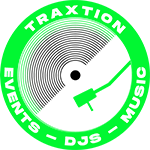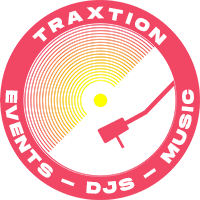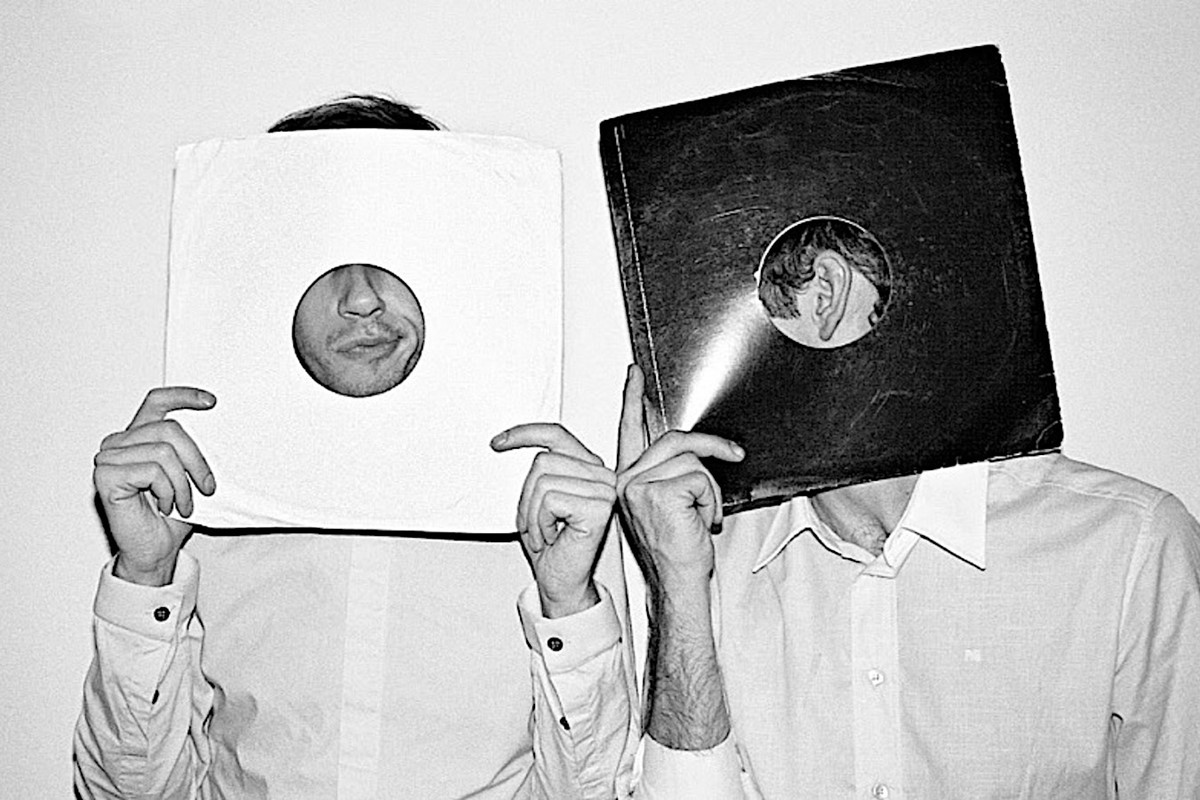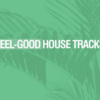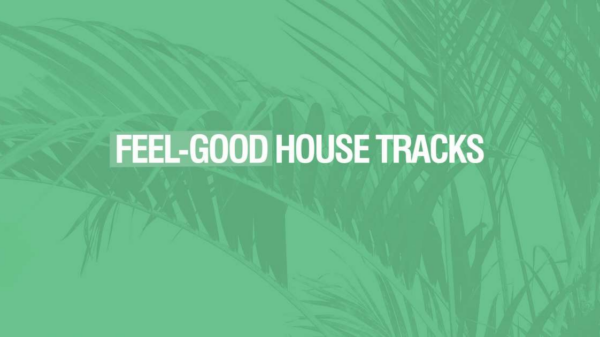In 2002, the New York Times reported on the rise of the ‘mash-up’, a track that takes the isolated vocal from one song and matches it with the instrumental of another. Today, you can type ‘mash-up’ followed by any two artist names into YouTube’s search bar and be met with all sorts of abominable creations: from off-beat and alarmingly out-of-tune blends, to functional-yet-artless mixes of two chart-topping hits. But 20 years ago, mash-ups were a genuine DIY phenomenon, put together by amateur enthusiasts with little respect for intellectual property laws or the wishes of the original artists, and shared over the growing world wide web. Mash-ups, or ‘bootlegs’ as they were sometimes called at the time, “may represent the first significant new musical genre to be lifted out of the underground, developed and then spread, mostly via the web,” the Times wrote.
If there was a high-water mark in this “new musical genre”, it was 2manydjs’ As Heard on Radio Soulwax Pt. 2. The mix – which is coming to streaming platforms for the first time, with plans to mark its 20th anniversary with a show at London’s Brixton Academy in December – features a dizzying 45 tracks stitched together into a genre-hopping, pronghorn-speed DJ mix, where many of its songs are layered over one another as mash-up collages. The best mash-ups thrived on the unexpectedness of their pairings, and As Heard on Radio Soulwax Pt. 2 was full of surprising blends (Basement Jaxx v prog-rock supergroup Emerson, Lake & Palmer; Destiny’s Child v 10cc; Salt-N-Pepa v the Stooges) which, unlike most bootlegs, were legally licensed for the mix.
The novelty of these musical marriages was certainly eyebrow-raising, but what made As Heard on Radio Soulwax Pt. 2 so distinctive was the personality, discerning taste, and genuine musicality that 2manydjs displayed, with each mash-up seeming to reveal a new melody or interlocking rhythm between the two tracks. And even outside of those mash-ups, the mix’s curation was impeccable, levelling the cultural divides between classic pop (Dolly Parton), indie favourites (the Velvet Underground, the Breeders), and mutant underground dance music (ADULT., Zongamin, Maurice Fulton). It “manages to be completely eclectic while maintaining a unified aesthetic, sensibility, and sound,” the New York Times later said when they declared it their pop album of the year. “If playing this CD doesn’t get the party started, then you’re at the wrong party.”
Although As Heard on Radio Soulwax Pt. 2 was released in 2002, its origins go back to the late 1990s. At the time, ‘2manydjs’ didn’t officially exist – the two artists behind the group, Belgian brothers David and Stephen Dewaele, were focused on their band Soulwax, who were influenced by the heavy desert-rock of American groups like Kyuss and Monster Magnet, and were starting to gain some international recognition. Stephen and the band’s former drummer Piet Dierickx used to have a DJ duo on the side, but when the latter got married and moved to New York in 1997, Stephen asked his brother to step in for a few gigs, generally using the name The Flying Dewaele Brothers. “From 97 onwards, we DJed sporadically, and then regularly, and then a lot,” David says when we meet ahead of the compilation’s reissue.
By the time Soulwax released their second album Much Against Everyone’s Advice in 1998, they would usually DJ aftershow parties following their gigs as a way to add some spontaneity to the well-rehearsed routines of touring life. But they weren’t inspired by the dance music around them. While plenty of DJs had diverse tastes in music, this was rarely reflected in what they actually played on the dancefloor, whereas David and Stephen had an anything-goes approach. Their father, Jackie Dewaele, was a famous Belgian radio DJ under the name Zaki, and they grew up surrounded by crates of promo records from across all different genres. As such, you were more likely to hear them play New Order’s “Blue Monday” or the Residents’ weirdo Hank Williams cover “Kaw-Liga” than something by a mainstream house producer.
With Soulwax’s reputation growing at home and abroad, Mark Coenen, a producer at the Belgian radio station Studio Brussel, asked them to get involved with a radio show he was putting together. The idea was for five artists who were not known as DJs to programme an hour per week where they could play whatever they wanted. The show was originally called Hank the DJ (a pun on a Dutch name that’s broadly lost in translation), but on the Dewaeles’ insistence, it was eventually rebranded as Hang the DJ. These radio shows, which ran between 1999 and 2001, became a testing ground for many of the mixes that would later appear on As Heard on Radio Soulwax Pt. 2.
“What ended up being known as mash-ups, in our minds, was the same as DJing. Why else would people put acapellas on 12”s?” – David Dewaele, 2manydjs
Preparation for Hang the DJ was usually the same every week. On Thursday, they’d clear out the record shops in their hometown, Ghent; on Friday and Saturday they’d play their new purchases out at nightclubs; on Monday they’d make a shortlist of their highlights; and on Tuesday they’d construct the mix, ready to submit to the station on Wednesday. “We had way too many records that we liked,” David explains, “so often we’d say ‘Why don’t we just take this little bit from there?’ It was a quick way to put these things together. And then we fell into a thing where it was like ‘We can put things together that maybe don’t fit together.’ What ended up being known as mash-ups, in our minds, was the same as DJing. Why else would people put acapellas on 12”s?”
Across the Southern Bight, the Hank the DJ mixes had found their way to a London DJ called Erol Alkan. Alkan’s clubnight Trash took place every Monday, playing a mixture of indie-rock and alternative dance records to a die-hard crowd of fashionistas and new music fanatics. The popularity of the party meant that a lot of record labels were vying for Alkan’s attention, and one day a representative of Soulwax’s label PIAS Recordings (Play It Again Sam) called and asked to send him a Hank the DJ mix. At the time, Alkan was living in a bedsit in Tufnell Park, so he requested that any promos be sent to his parents’ house down the road in Archway. “I used to walk to their house every Monday to pick up the records I’d been sent,” he says. “I found this CD in there and put it on my parents’ hi-fi system. I remember sitting in my mum’s living room and listening to the whole thing start-to-finish. I thought it was amazing. All the references and juxtapositions were ones I recognised and appreciated. But on top of everything, I was in awe of the musicality behind it all.”
Their music taste wasn’t the only thing they had in common – Alkan had also been making rudimentary mash-ups of his own. “Somebody gave me a cracked copy of a program called Acid. I was like, ‘Wow, you can make music in seconds just by sampling other records.’ What you were doing was bamboozling the crowd, starting one thing then making it different,” he says. He eventually started sharing his blends under the alias Kurtis Rush. “Those kinds of records have been there for decades,” he says – one mash-up timeline begins all the way back in 1906, linking early sound collage and musique concrète experiments to ‘Revolution 9’, Stars on 45, and Jive Bunny – “but being able to make things fully formed on the PC was a revelation.”
Erol Alkan booked David and Stephen to DJ at Trash, and went down to Soulwax’s next gig in London. At the aftershow party, he introduced himself to David, who asked Alkan if he could play a few records while he and his brother dealt with an urgent matter. “I started going through their records to find something to play if they weren’t back in time, and as I was flicking through I thought ‘I’ve got this, I’ve got this, I’ve got this, I love this…’ It was like going through my own record collection. It was a nice icebreaker!” They hit it off instantly, and the following Monday, David and Stephen played Trash for the first time. The club’s reputation meant that celebrities would often come down, and there was an appropriate guest in attendance: “That was the night that Lemmy from Mötorhead was there.”
Although mash-ups only formed a small part of their DJ sets, they were novel enough for journalists to write about them in the clubbing columns of magazines like SleazeNation and The Face. One day on a weekly Monday promo trip to his parents’ house, Alkan popped into Woolworths and bought a CD single of the Sugababes’ “Overload”, mixed it with the acapella of “Forgot About Dre”, and played it at Trash that night. “Someone from Xfm was there, rang me the next day, and I took in the MiniDisc,” he says. “They subsequently played it every day for six weeks after that. If something was interesting and exciting, it would just spread.”
This speed was appealing to David and Stephen, who had grown tired of the fact that Soulwax were still promoting an album they’d recorded years earlier. “We used to go to Rough Trade with Erol,” Stephen says, “and I remember an A&R coming in saying ‘I just heard this really good thing on Xfm!’ It was one we did – someone from PIAS had given it to them. We loved that we could make something and a week later sees ripples everywhere.” Other artists were making mash-ups and exchanging them online via communities like BoomSelection, or pressing up small runs of white-label vinyl. Bigger names in the scene, like The Freelance Hellraiser and Richard X, would go on to have successful pop production careers across the subsequent decade. “I don’t know who was doing it first,” Stephen admits, “but a lot of people were doing it at the same time.”
“All the references and juxtapositions were ones I recognised and appreciated. But on top of everything, I was in awe of the musicality behind it all” – Erol Alkan
As demand grew, Alkan convinced David and Stephen to press a few of their bootlegs to vinyl. He recalls cutting dubplates (acetate discs used to test the sound of a record before it’s pressed to a larger run of vinyl) with David at Music House in Holloway, a place beloved by serious drum-and-bass and UK garage producers who made music with heavy sub-bass frequencies. “They had the Rolls-Royce of dubplate cutting machines,” Alkan says. “Everyone is talking to each other about what they’re playing on the weekend, and I remember the guy behind us in the queue was DJ Deekline. He was like, ‘What you in for mate?’ And I was like, ‘Um, I’ve done this thing where it’s Missy Elliott rapping over Metallica, and my friend has done 10cc and Destiny’s Child…’ OK. But when we got to the front and the tracks were getting played [for the cutting], everyone was nodding along.”
It was around this time that David and Stephen started using the 2manydjs alias, a reference to their Soulwax track “Too Many DJs”. When they pressed up a few bootlegs to white-label vinyl, they’d sit in Alkan’s flat hand-stamping their email address, too_manly_djs@hotmail.com, onto the records. “I wonder what happened to that email address?” David muses.
Recognising the energy and interest surrounding 2manydjs, Kenny Gates, the head of PIAS, asked the brothers to put together an official album in the vein of their Hang the DJ shows. They never thought they’d be able to licence the songs. “Dave and me were like, ‘Good luck! It’s all other people’s music, you’ll never be able to clear it,’” says Stephen. “And then he and his assistant came to the studio and said ‘Make me a list.’ It came back after about three weeks like: ‘No. No. No. Yes! No. No. No. Yes!’ And all the yeses were like the Velvet Underground and the Stooges. That’s when a lot of stuff started happening. It’s down to Kenny’s persistence.”
As 2manydjs wrote on their website at the time, they requested clearance to use 187 tracks, which took 860 emails, 160 faxes, and calls to 45 record companies. In the end they used 45 tracks, with elements from 114 pieces of music (the full list of tracks that were requested, accepted, declined, or left unused can still be found online). The mix was put together in a linear fashion, with vinyl from two Technics turntables captured in a proto-Digital Audio Workstation (DAW) called Session 8, which mimicked an eight-track recorder. After recording and editing one song, they’d trigger the audio from the computer, return to the decks, and try out ideas for the next track in the sequence. “Stephen would have six or seven options and we’d see what works,” David explains. The process wasn’t wildly different from sampling, though Stephen says they were attracted to the fact that they could “construct whole songs, whereas a lot of sample-based music would just use four beats, or an eight-bar loop”.
Recording only took a few weeks. For a while, they had to stop what they were doing while they waited for approval for the use of Electric Six’s “Danger! High Voltage”, as the band (who were then still going by their old name, The Wildbunch) would only confirm after a band meeting. “We sent them an email and they said ‘We only have band rehearsal every two weeks. The next one is on Monday. We can tell you on Tuesday.’” One refusal came from Detroit dance music legend Carl Craig, whose remix of ADULT.’s “Hand to Phone” was apparently denied on the basis that he wouldn’t be on the same mix as Dolly Parton (they used a re-edited version of the original instead). The Residents allowed them to use “Kaw-Liga” for free: “They said you don’t have to pay us any money, but we need 50 copies of the mix to give to our loyal fans,” Stephen explains, “which we thought was the coolest.”
David and Stephen had few expectations for the mix upon its release. Due to licensing restrictions, the album was only available in Belgium, and although their DJ sets had received some radio and press attention, they were still fairly anonymous as the creators. Their only benchmark for success was that the album got some good write-ups from magazines like Jockey Slut, or that they might sell a few thousand copies at a trendy boutique like Colette. But it soon became obvious that the compilation was finding fans online. The rise of home internet and illegal file-sharing meant that more and more indie rock fans were becoming open to new genres, and delving back into more obscure corners of music’s past. 2manydjs’ genre-hopping, era-flattening, magpie-like approach evidently chimed with the moment. The Canadian musician Peaches, whose song “Fuck the Pain Away” was memorably included in the mix, sums up the feeling: “It was like I finally found my people!” she says over email. “Mixing ‘Fuck the Pain Away’ with The Velvet Underground’s ‘I’m Waiting for the Man’ made sense to me. I loved making all the connections between the dance and guitar tracks in this mix. It made me excited about music from the past, and new tracks, and how they all work together.”
“I loved making all the connections between the dance and guitar tracks in this mix. It made me excited about music from the past, and new tracks, and how they all work together” – Peaches
The UK techno musician Daniel Avery was a teenager in Bournemouth when it reached British audiences. “To have a DJ mix that had the Stooges on it as well as electroclash records, it really did feel like some kind of seismic shift had happened,” he says over the phone. “At the time they got a lot of noses turned up at them; I think someone described them as ‘the new Jive Bunny’. I remember reading that and thinking ‘Fuck it.’ This feels so fresh and exciting to me – and futuristic, in a way, even though a lot of the records were old. When it came out, I remember watching them DJ at Reading Festival and not even being able to get near the tent. It had just caught fire so much.”
Soon record labels were offering up their entire back catalogues to David and Stephen to remix. MTV floated the idea of them hosting a mash-up hour on the channel. During a tour of Japan, they went to the Bonjour Records shop and saw a wall filled with As Heard on Radio Soulwax Pts. 1, 3, 4, and beyond – despite the fact that Pt. 2 was the only official release they made, with the rest made up of unofficial rip-offs culled from their Hang the DJ shows (they laugh, today, at the idea of bootleggers making bootlegs of their bootlegs). “The thing that made it clear that this had gone big was the New York Times calling it the pop record of the year,” says David. “That sort of thing never happened for a compilation, or a Belgian artist.”
Meanwhile, mash-up mania had gone mainstream. In February 2002, Erol Alkan received a phone call from EMI enlisting him to make a mix of “Can’t Get You Out of My Head” and “Blue Monday” for Kylie Minogue to perform live at the Brit Awards. Two months, later Richard X’s Adina Howard vs. Tubeway Army bootleg was officially re-recorded by the Sugababes and went to number one. The next few years saw a number of increasingly formulaic and uninspiring mash-ups flood the market (both illicit and official releases) even after most of the original creators had moved on. “It had reached a certain point,” Alkan says, “but for a couple of years, these things were being made to make the best party possible. I think the value of that scene was how you could make something new from two pre-existing things. Putting one massive acapella over one massive instrumental doesn’t make a track twice as massive. What was always interesting was how you skewered cultural perceptions of the music. How could you make a particular voice that would never have existed over a certain type of production work together? And how could you create something new and exciting out of that?”
David and Stephen managed to maintain a level head about the mix’s success. They were getting booked for more international shows, and surprisingly to them, they were being embraced by the dance music community. Yet they never felt like celebrity DJs, mostly sharing the stage with other artists in a growing yet close-knit transatlantic scene – the likes of Peaches, Felix da Housecat, Kittin, Tiga, Playgroup, LCD Soundsystem, who were creating a style of dance music sound that sounded contemporary while embracing ideas from rock and pop music’s previous eras. Besides, even as they gigged around the world, they knew that they still had another Soulwax album to record eventually. “We’d be saying ‘We’re off to Brazil for the weekend,’” says Stephen, “and then we’d be back to the studio to say beep-beep-beep. It wasn’t like we were living large.”
There was one unexpected fan of the record. “We had a very rudimentary website where people could leave messages,” says David. “People would message every day: ‘I saw you in Lisbon – amazing!’ or ‘I love the album!’ And someone kept messaging with the name ‘David Bowie’ saying ‘Hey, I just talked about you on Jonathan Ross.’ We imagined it was a David Bowie fan leaving these messages.” Then, in September 2003, Bowie invited David and Stephen onto a French TV show, Traffic Musique: “A bit like Jools Holland in France, but it goes on for four hours,” Stephen says. “Bowie invited people on and played music from his new record. He invited Mick Rock, François Hardy, Damon Albarn, Air – and Dave and me. It was the most surreal thing.”
“We talked about the internet,” says David. “I asked him ‘How much time a day do you spend on the internet?’ And he said ‘Somewhere between seven and ten hours.’ A day. I was like, ‘That’s a lot of time for a guy who’s on tour.’ And he said ‘Well, yeah – I’ve been leaving you messages on your message board!’” Stephen admits he “really had a hard time” meeting his idol: “He walked up to me and said hopefully we can do something together. I said ‘No, no, your stuff is great, why would we do that?’” Eventually, 2manydjs did do a project involving Bowie, in a roundabout way, when they put together a visual mix made up entirely of his songs and productions for their online radio station Radio Soulwax in 2012. “He told us that he loved it,” Stephen says, “so we did it, in the end. But this was one of the people who was so instrumental to the things we do – it felt too close, in a way.”
“[David Bowie] walked up to me and said hopefully we can do something together. I said ‘No, no, your stuff is great, why would we do that?’” – Stephen Dewaele, 2manydjs
The re-release of As Heard on Radio Soulwax Pt. 2 restores the album’s original artwork, which was not properly licensed when the album first came out and had to be Tip-Exed out on subsequent releases. Created by Belgian designer Marc Meulemans, the design took a 1970s picture of Elton John (by photographer Richard Young) giving a two-fingered salute to the camera as he leaves the legendary Mayfair after-hours spot Langan’s Brasserie, and edited it so that the rock star had a paper bag covering his head. “Meulemans was part of the scene we were in. He liked the decadence of being wasted – elegantly wasted,” says Stephen. Meulemans died in 2007, and 2manydjs wanted to restore his work for this new release. “We loved the image, so we cleared it for this,” says David.
Despite everything, the Dewaeles say they’re not prone to nostalgia, and are so busy with their current projects that they wouldn’t have even realised that the anniversary was approaching if their management hadn’t told them. “It’s not in our nature to look back,” says David. “There’s a lot of stuff we’ve done where to look back we’d say, ‘I’m not sure about that…’ But this record has had a unique and extraordinary length of shelf life. After a while, we looked at it like it wasn’t even us anymore. But looking at it now, this one is still cool. It’s still exciting.”
2manydjs celebrate 20 years of As Heard on Radio Soulwax Pt. 2 with Erol Alkan, Kittin, Mixhell, and Charlotte Adigéry & Bolis Pupul at London’s Brixton Academy on December 17, 2022
Join Dazed Club and be part of our world! You get exclusive access to events, parties, festivals and our editors, as well as a free subscription to Dazed for a year. Join for £5/month today
